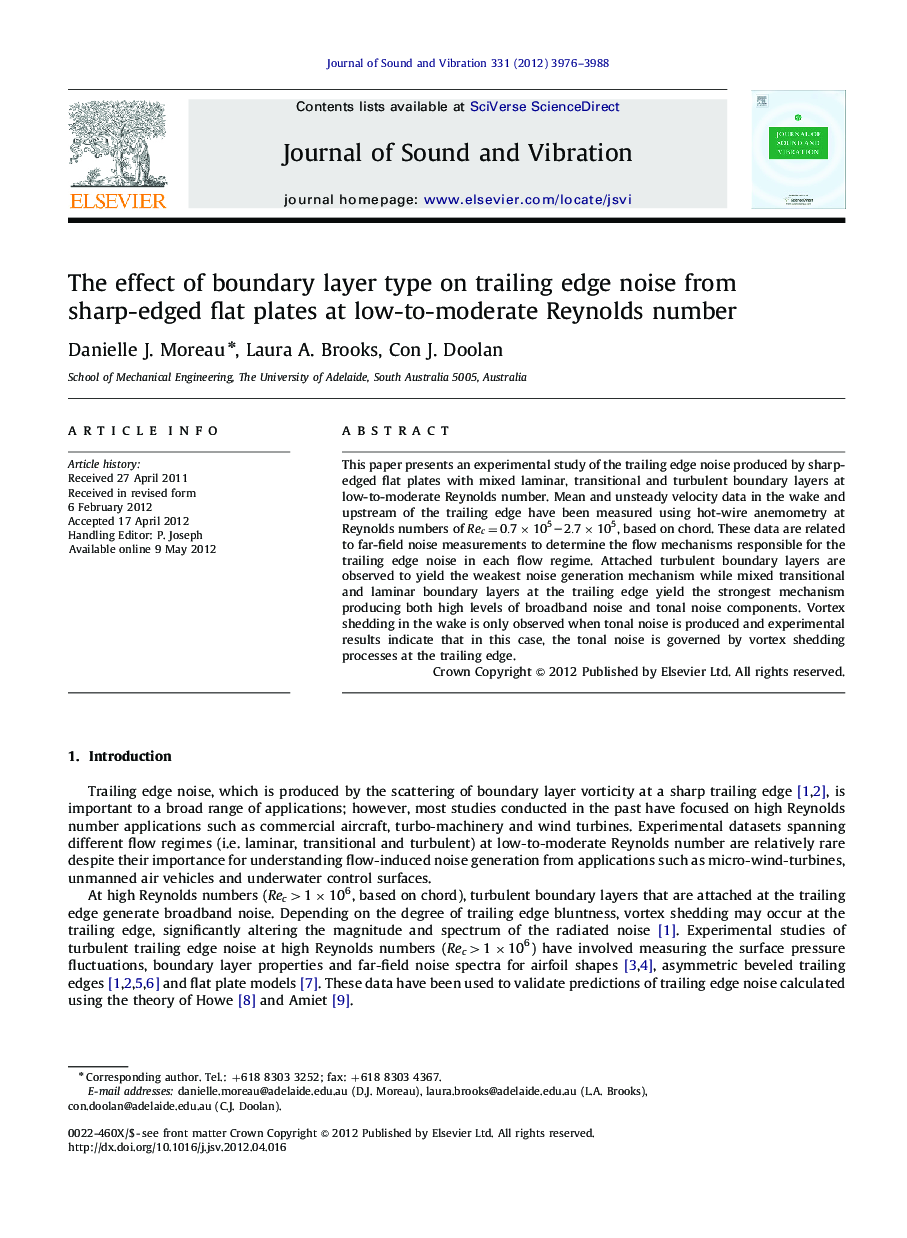| کد مقاله | کد نشریه | سال انتشار | مقاله انگلیسی | نسخه تمام متن |
|---|---|---|---|---|
| 288598 | 509633 | 2012 | 13 صفحه PDF | دانلود رایگان |

This paper presents an experimental study of the trailing edge noise produced by sharp-edged flat plates with mixed laminar, transitional and turbulent boundary layers at low-to-moderate Reynolds number. Mean and unsteady velocity data in the wake and upstream of the trailing edge have been measured using hot-wire anemometry at Reynolds numbers of Rec=0.7×105–2.7×105Rec=0.7×105–2.7×105, based on chord. These data are related to far-field noise measurements to determine the flow mechanisms responsible for the trailing edge noise in each flow regime. Attached turbulent boundary layers are observed to yield the weakest noise generation mechanism while mixed transitional and laminar boundary layers at the trailing edge yield the strongest mechanism producing both high levels of broadband noise and tonal noise components. Vortex shedding in the wake is only observed when tonal noise is produced and experimental results indicate that in this case, the tonal noise is governed by vortex shedding processes at the trailing edge.
► The noise produced by a flat plate with varying flow regimes is investigated.
► Attached turbulent boundary layers yield the weakest noise generation mechanism.
► Mixed turbulent and laminar boundary layers yield the strongest noise mechanism.
► Mixed turbulent and laminar boundary layers produce high levels of broad-band and tonal noise.
► The tonal noise is governed by vortex shedding processes at the trailing edge.
Journal: Journal of Sound and Vibration - Volume 331, Issue 17, 13 August 2012, Pages 3976–3988